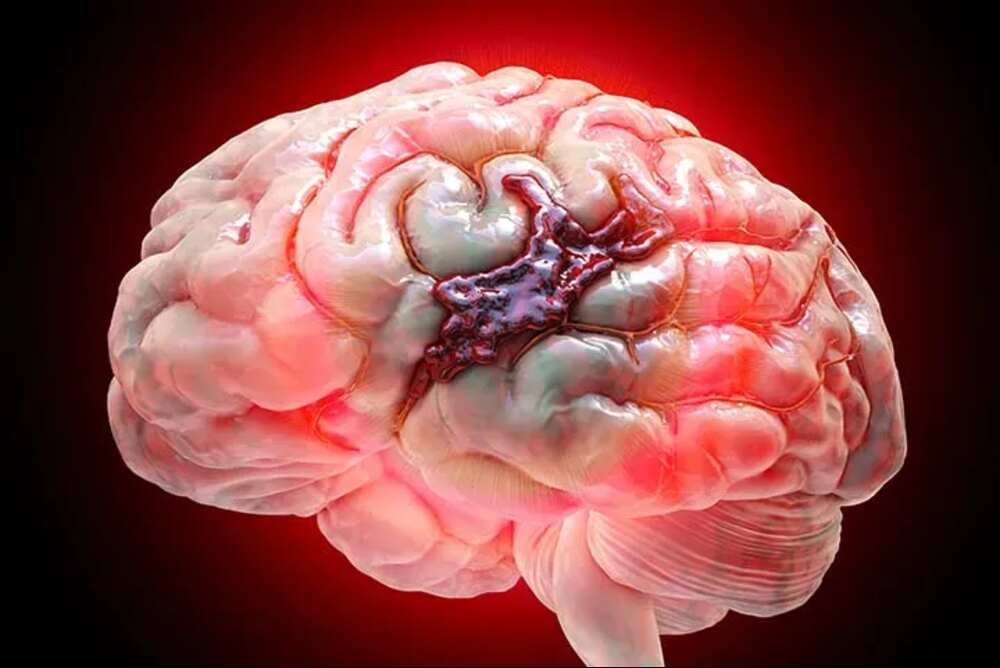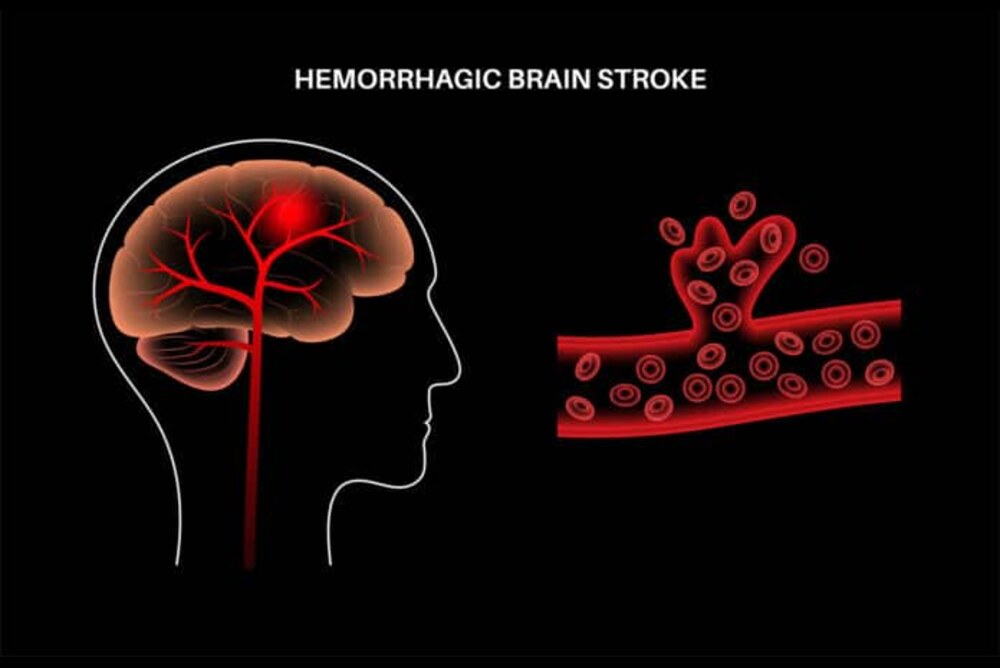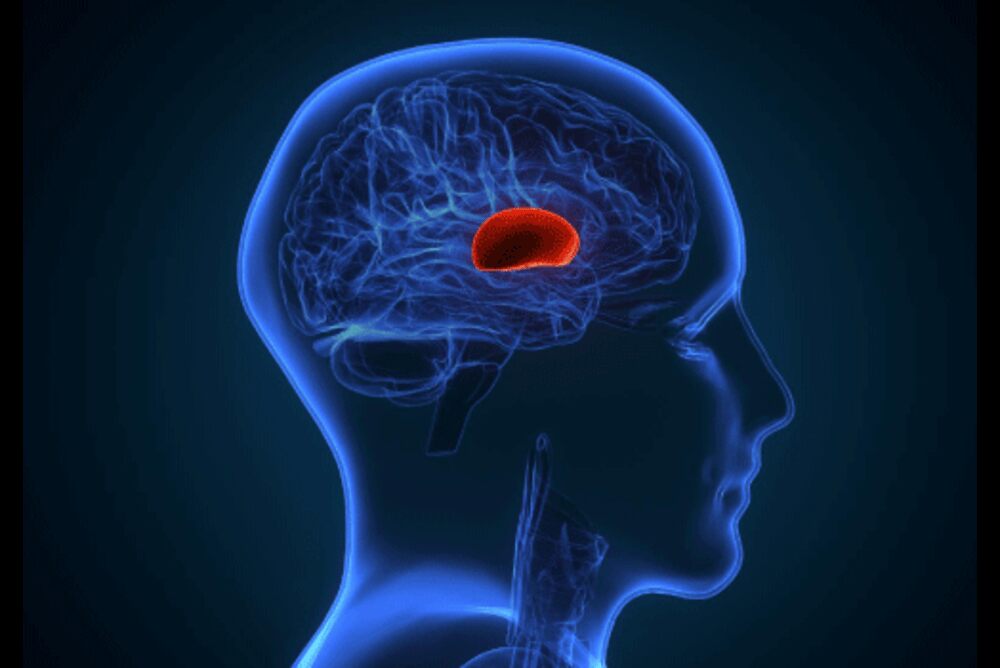Support in Insurance Claim
No-Cost EMI
Without Admission
Short Hospital Stay
4.9 Rating on Google
Benefits

Less Invasive Approach

Reduced Risk of Complications

Quick Healing Process

Preserves Brain Function
What is a Brain Hemorrhage?
A brain hemorrhage or brain bleeding is a form of stroke that takes place after a blood vessel bursts and releases blood to or in the vicinity of the brain. It is responsible for about 15 per cent in all strokes which means that one out of seven strokes is caused by bleeding within the brain.
The bleeding causes pressure to increase within the skull and causes damage to brain tissue, causing grave complications. Contrary to strokes caused by ischemic, which are caused by blockages hemorrhagic strokes occur due to ruptured vessels. The immediate treatment of brain hemorrhage is essential to stop bleeding, decrease pressure and increase the chance of survival and recovery.


Types of Brain Hemorrhage
Intracerebral Hemorrhage (ICH)
- The brain tissue is the site of it.
- Principal causes: hypertension of the blood (hypertension), arteriovenous malformations (AVMs), and aneurysms.
- It is common for unexpected neurological symptoms such as weakness, paralysis as well as loss or speech.
Subarachnoid Hemorrhage (SAH)
- The bleeding occurs within the space between the cerebral cortex and the outer cover.
- The causes are ruptured aneurysms, AVMs, as well as head injury.
- Patients frequently experience a sudden, intense "worst-ever" headache along with nausea vomiting, fainting, or nausea.
Subdural Hematoma (SDH)
- The brain's blood vessels collect between its area and between the dura (outer covering).
- The most common causes are the aging process, injuries or even the condition is idiopathic (unknown cause).
- SDH symptoms can develop slowly (chronic SDH) or suddenly (acute SDH).
Epidural Hematoma (EDH)
- The skull is a source of bleeding, as is the dura mater.
- Most often, it is result from head fractures or trauma to the skull.
- Patients can experience a brief loss of consciousness, regain it briefly and then begin to deteriorate quickly. This is a condition that requires immediate attention.
Intraventricular Hemorrhage (IVH)
- In the cerebral spinal fluid is circulated.
- The reasons for this may include tiny AVMs or aneurysms or trauma.
- It can increase intracranial pressure as well as reduce the flow of cerebrospinal fluid through the brain. This makes the treatment necessary.
Symptoms of Brain Hemorrhage
The symptoms of brain hemorrhage often manifest abruptly and can worsen rapidly. Symptoms to watch out for include:
- Sudden, severe headache
- Convulsions, seizures
- Nausea and vomiting
- Loss of consciousness
- Neurological impairments (weakness in speaking, trouble speaking blurred vision)
- Paralysis to one side
- Unbalance or confusion
If you or anyone around you suffers from these symptoms, get emergency medical attention immediately.


Causes of Brain Hemorrhage
A hemorrhage that occurs in the brain (brain bleeding) can occur due to the rupture of the blood vessel inside the brain. The vessel breaks or leaks. The causes of this may vary depending on the type of hemorrhage.
- Intracerebral hemorrhage (ICH): It usually occurs due to an increase in blood pressure (hypertension). It can occur due to an angioplasty or arteriovenous malformation (AVM).
- Subarachnoid Hemorrhage (SAH): It's usually the result of a ruptured aneurysm AVM or a serious trauma to the skull.
- Subdural Hematoma (SDH): It is commonly seen in people who are older. It could be caused by head trauma or changes due to aging. Unidentified (idiopathic) cause.
- Epidural Hematoma (EDH): Typically caused by head trauma that is very severe, or skull injuries.
- Intraventricular Hemorrhage (IVH): May be caused by tiny AVMs, aneurysms and the trauma of The identification of the cause is crucial because earlier treatment improves the odds of survival and improves brain hemorrhage recovery.
Treatment Options at IRFacilities
At IRFacilities we offer immediate and life-saving treatment of brain hemorrhage with advanced endovascular techniques. Our team of experts is specialized with minimally-invasive techniques that provide quicker recovery times and superior outcomes in comparison to traditional open surgeries.
Aneurysm Coiling
This minimally invasive brain hemorrhage treatment involves threading a catheter to the brain aneurysm. Tiny platinum coils are deployed into the aneurysm, promoting clotting and sealing it off to prevent re-bleeding.
Flow Diverter Placement
For complex aneurysms, a mesh stent is placed across the aneurysm neck. This redirects blood flow, causing the aneurysm to clot and shrink, providing a durable solution.
AVM Embolization
We treat bleeding brain AVMs by injecting medical glue through a catheter. This blocks abnormal vessels, stops hemorrhage, and reduces future bleeding risks.
SAH Vasospasm Management
A dangerous complication where brain blood vessels narrow after hemorrhage. We manage this with balloon angioplasty and medication infusion to reopen vessels and prevent stroke.


Brain Hemorrhage Treatment Cost in India
The brain hemorrhage treatment cost in India is significantly more affordable than in Western countries, making IRFacilities a preferred choice for high-quality neurovascular care. Costs vary based on procedure complexity and technology used:
- Aneurysm Coiling: ₹2.5 – 4 Lakh
- Flow Diverter Placement: ₹5 – 8 Lakh (due to advanced stent technology)
- AVM Embolization: ₹2.5 – 5 Lakh
- SAH Vasospasm Management: ₹2 – 3.5 Lakh
The final cost of treatment for brain hemorrhage depends on several factors, including the extent of hemorrhage and required ICU stays, implant type, surgical expertise, and the ICU stay. IRFacilities continues to provide world-class healthcare at an affordable price, despite these variables.











